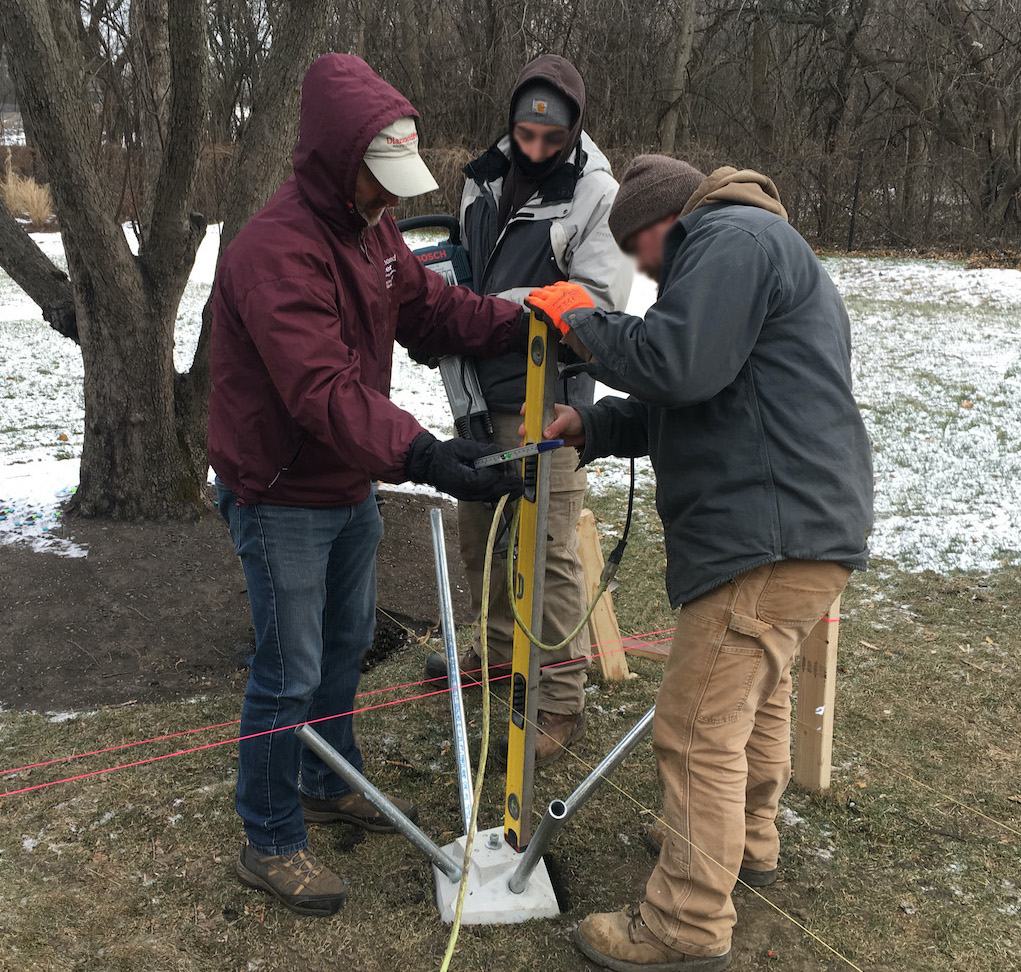Frost Heave Explained
Frost Heave Is A Complicated Process. Here's What the Code Doesn't Tell You
As with anything in life, it is important to make sure you build with a solid foundation. It’s the cornerstone of every successful project. When planning for a beautiful addition to your outdoor living space, it is important to make sure your investment doesn’t end up costing you more than what the project was originally budgeted.
Dealing with the negative effects of frost heave can certainly complicate this process.
Measuring Frost Heave Severity
Frost heave and freezing soils are often misunderstood, and the misconceptions of what causes frost heave complicate the subject.
Surprisingly, to date there is no accepted engineering methodology for determining the severity of the “frost force” or for quantifying that force acting on a foundation. Therefore, no engineering calculation currently exists to determine “frost force,” nor is there any established testing methodology criteria that quantifies specific frost protection for any foundation system or type. (see Chamberlain, E.J. (1981) Frost Susceptibility of Soil).
In that comprehensive study, Edwin J. Chamberlain, a research engineer for the US Army Cold Regions Research and Engineering Laboratory, evaluated methods available for testing the frost susceptibility of soil. It is evident from his Introduction that no repeatable testing method had been developed.
“…The abundance of methods for determining the frost susceptibility of soils is evidence of the lack of success in developing a comprehensive method. Obviously, each has been developed because others have proven to be unsatisfactory. In many cases the new criteria have been successful for specific but limited purposes. In most cases, however, there is little evidence as to the degree of success, i.e. most new criteria receive little scientific field validation.”Chamberlain, E.J. (1981) Frost Susceptibility of Soil
Historically, the effectiveness of conventional code compliant concrete piers to resist the effects of frost heave have been based solely on observational evidence; over time it’s been determined that a given size footing appears to perform to a reasonable standard. The building code defines the size and depth of a concrete footing as having the historical observational performance to meet the reasonable building standard in the jurisdiction governed. If, the only methodology to determine a foundation’s ability to resist frost heave is based on observational evidence, one would ask:
Does the no dig footer system perform in the field?
After 10 years of studying over 95,000 Diamond Piers by Pin Foundations, Inc. (PFI) Engineers in the Upper Midwest of the United States, the 2019 Frost Study showed a 99.7% effectiveness in resisting the negative effects of frost heave.
Thus, PFI engineers the various sized Diamond Pier models to meet or exceed the forces of bearing, uplift and lateral loads of a given size concrete footing.
DP50-50” equates up to a 20” diameter concrete footing 48” deep.
DP75-63” equates up to a 24” diameter concrete footing 60” deep.

Causes of Severe Frost Heave
There are five environmental factors that can greatly affect the occurrence of frost heave such as:
- Soil type: The Unified Soil Classification System (USCS) is used professionally to define and classify the texture and size of soil particles. Soil is typically a mix of silts, clays, sands, and aggregate.
- Rate of Heat Removal from the Soil: The rate of soil temperature drop contributes to the severity of frost heave effects. The depth of snow cover or other insulators affect the freezing gradient; however, there seems to be some confusion and debate on this topic as the soil type and temperature gradient has produced varying results (Chamberlain, 1981, pp. 8-9).
- Moisture Content: High moisture content and high-water tables increase the potential for frost heave.
- Overburden Stress: Overburden stress is a factor in limiting the effects of frost heave. These loading types are as follows: point load, line load, uniformly loaded circular area, rectangular loaded area, and strip loading (see Chegg, 2019).
- Repeated Freeze-Thaw Cycling: (thaw weakening) Repeated freeze-thaw cycles alter the soils to varying amounts, which tends to increase the effects of frost heave. According to Chamberlain, several unpublished studies have shown that freezing and thawing can greatly affect frost heave. For a clay soil, a second freeze was reported to have increased the amount of frost heave by a factor of 8 when the surcharge was 3.5 kPa (see Chamberlain, 1981, Figure 15). However, Sherif et al. (1977) reported that the amount of frost heave for a silty sand decreased with freeze-thaw cycling.


